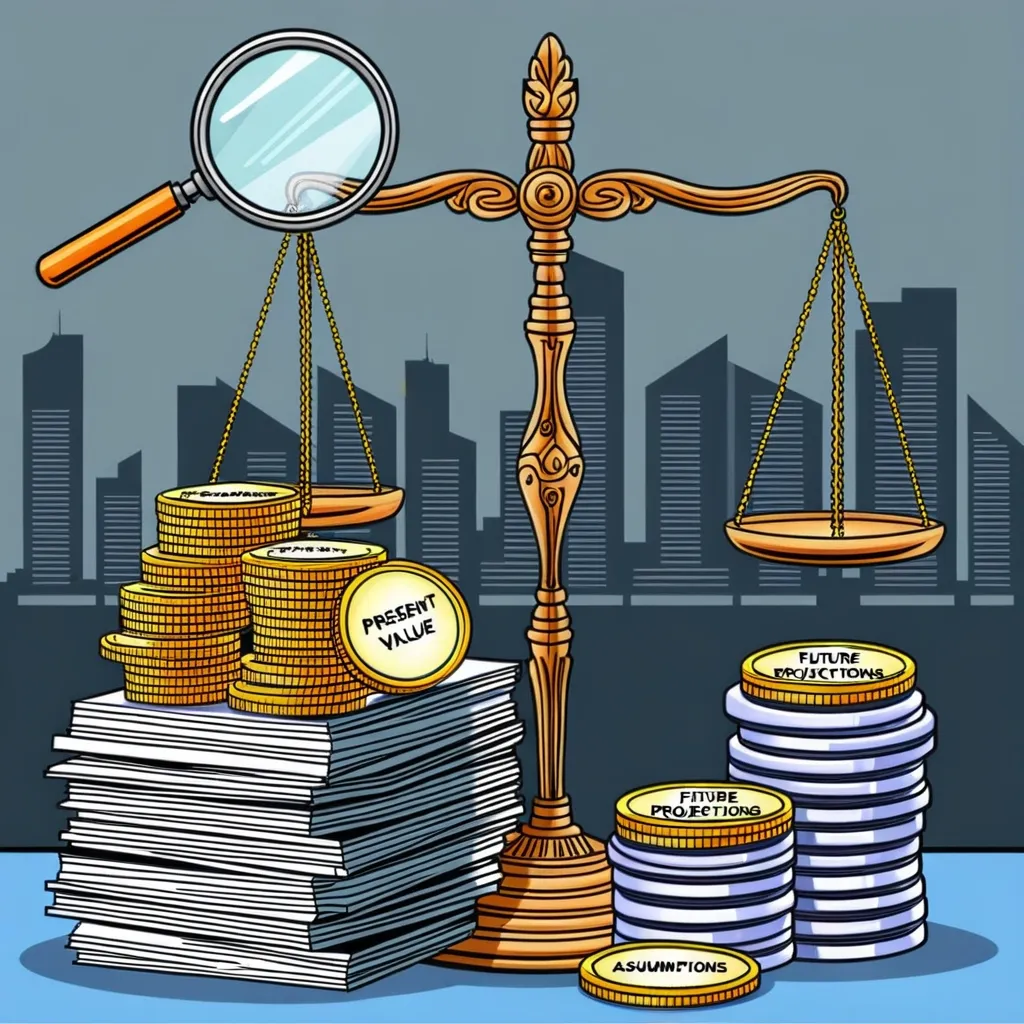Investing in stocks is a bit like playing detective, and one of the biggest mysteries to solve is figuring out a stock’s fair value. This fair value is crucial because it tells the true worth of a company. It’s not some number pulled out of thin air; it’s based on data like financial health, future prospects, and potential risks. Understanding this helps investors know if a stock is selling for more or less than it’s actually worth at the moment. Simply put, fair value is the price at which a stock would ideally switch hands between knowledgeable and willing buyers and sellers.
Delving into the world of investing, many people swear by the Discounted Cash Flow (DCF) model to uncover a company’s fair value. It’s kind of like a crystal ball, projecting all future cash flows and bringing them into today’s money value using something called the Weighted Average Cost of Capital (WACC). It’s about understanding that money today isn’t worth the same as the same amount in ten years due to inflation and other economic factors.
Imagine checking out Company XYZ. The DCF model requires projecting free cash flows for several years, say 5 to 10. Free cash flow is what’s left after a company meets its capital needs and it’s a real insight into the company’s health. So, let’s say Company XYZ’s free cash flow projections are $10 million in the first year, gradually rising up to $30 million by the fifth year. But the value beyond those five years, known as the terminal value, is also crucial. For XYZ, using a 3% growth rate and a WACC, the terminal value can be calculated.
Once the cash flows and terminal value are projected, they need to be discounted back to today’s terms to calculate the present value – think of it like reverse-aging future money. Adding these gives the total Net Present Value (NPV), which represents the estimated fair value of the company.
But hey, the DCF model isn’t the only game in town. Other methods exist to cross-check these estimates. Comparable Company Analysis (CCA) compares a company’s financial ratios to similar firms in the industry. By applying these ratios to XYZ’s financials, a fair value can be established. On the other hand, the Precedent Transaction Analysis digs into past acquisitions in the industry to find metrics to apply to the company’s value. Lastly, the Price-Income Model revolves around comparing ratios between XYZ and its peers, offering a simpler yet effective valuation strategy.
Combining these models, imagine evaluating Company XYZ: A thorough DCF analysis might value XYZ at $150 million, whereas the CCA pegs it at $135 million and a precedent-based approach at $140 million. By looking at these figures, you discern a fair value range, hinting where market prices ought to be.
Understanding fair value is not just about crunching numbers. It’s like laying down a roadmap for making smart decisions. If the calculated fair value is higher than the market price, it suggests the stock is undervalued and could be a potential buy. If the opposite is true, it might be time to ditch or at least rethink that stock. It becomes a shield against unnecessary risks, signaling when corrections in overpriced stocks may occur and showing opportunities where there’s room for growth in undervalued ones.
Think of it in real-world terms: There’s a tech firm called Company X with shares trading at $100 now. After some elbow grease using DCF and other valuation models, if the fair value is pinpointed at $120 per share, it spells an opportunity—it’s a hidden gem, undervalued by the market. However, if the fair value is estimated at $80 per share, this suggests overvaluation, prompting a rethink on investment.
However, smooth sailing through fair value evaluations has its rough waters. The process often teeters on assumptions - future cash flows, growth rates, discount rates - that have a huge impact on the end result. Plus, reliable current data is necessary to derive an accurate fair value estimate. Selecting the right group of peers in the CCA model is crucial, bearing a significant influence on the evaluation accuracy.
Luckily, the modern investor isn’t alone. Several tools and resources make these calculations less daunting. Financial modeling software offers a hand by using analyst estimates to propose fair value ranges. Analyst reports, which consider future cash flows, competitive stance, and overall certainty, also offer insights.
In conclusion, aiming for fair value in investments is an exercise that rewards those who dare to look beyond surface numbers. Each model, whether it’s DCF, CCA, or others, paints parts of the bigger picture. While challenges lurk in assumption-making and data-gathering, these models collectively form a guide for better decision-making in stocks. It’s more than a static number; it’s about unveiling the true potential of a company and shaping your investment strategy around it. With the right tools and a solid grasp of fair value, navigating the stock market becomes less intimidating, turning what seems like a gamble into a calculated endeavor.
So next time, before diving headfirst into investments, take some time to assess the fair value. It might just unlock the path to savvy investing and growth in your portfolio. Investing isn’t just about buying low and selling high; it’s about understanding what makes something low or high in the first place. And fair value is your go-to compass in that pursuit.






